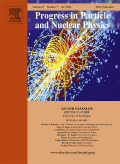
PROGRESS IN PARTICLE AND NUCLEAR PHYSICS
Scope & Guideline
Fostering Excellence in Scientific Inquiry
Introduction
Aims and Scopes
- Theoretical Frameworks in Particle Physics:
The journal emphasizes theoretical models and frameworks that describe particle interactions, symmetries, and the underlying principles of quantum mechanics and quantum field theory. - Experimental Techniques and Findings:
A significant focus is placed on experimental results from particle accelerators, colliders, and detectors, which provide empirical evidence for theories and enhance our understanding of particle behavior. - Nuclear Structure and Reactions:
Research on the structure of atomic nuclei, including phenomena such as shape coexistence, nucleon interactions, and nuclear reactions, is a core area of interest. - Astrophysical Applications:
The journal also explores the implications of particle and nuclear physics in astrophysics, including nucleosynthesis, neutrino physics, and the role of nuclear interactions in stellar processes. - Advancements in Computational Methods:
The use of sophisticated computational techniques, including lattice QCD and machine learning, to analyze and predict behaviors in nuclear and particle physics is highlighted as a unique contribution.
Trending and Emerging
- Quantum Entanglement and Information Theory:
There is a notable increase in research exploring the implications of quantum entanglement, particularly in collider experiments, highlighting its relevance in understanding fundamental particle interactions. - Neutrino Physics and Astrophysics:
The study of neutrinos, including their role in cosmic nucleosynthesis and interactions, is gaining momentum, reflecting a broader interest in their implications for both particle physics and cosmology. - Machine Learning Applications:
The application of machine learning techniques in analyzing data from high-energy physics experiments is emerging as a significant trend, enabling more sophisticated analyses of complex phenomena. - Holographic and Gauge/Gravity Duality Approaches:
Research utilizing holographic principles to understand QCD and other interactions is on the rise, indicating a growing interest in theoretical frameworks that bridge particle physics and gravitational theories. - Phase Transitions in Quantum Chromodynamics (QCD):
Emerging studies on phase transitions within QCD are reflecting an interest in understanding the behavior of matter under extreme conditions, which is relevant for both theoretical and experimental physics.
Declining or Waning
- Traditional Nuclear Models:
Interest in conventional nuclear models, which may have been predominant in earlier years, appears to be declining as the field shifts towards more innovative and complex approaches such as chiral effective field theories. - Classical Particle Decay Studies:
Research focusing solely on classical decay processes of particles is becoming less frequent, possibly due to a growing emphasis on novel decay mechanisms and rare processes that challenge the Standard Model. - Low-Energy Phenomena:
While low-energy nuclear physics remains important, the frequency of papers dedicated exclusively to low-energy phenomena is decreasing as the focus shifts toward high-energy collisions and extreme conditions. - Isolated Studies on Heavy Ion Collisions:
Papers discussing heavy-ion collisions in isolation are less common, with a trend towards integrating these studies with machine learning and other advanced analytical techniques.
Similar Journals
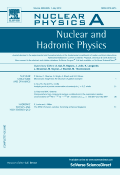
NUCLEAR PHYSICS A
Driving Progress in High Energy Physics ResearchNUCLEAR PHYSICS A, published by Elsevier, is a leading international journal dedicated to the fields of Nuclear and High Energy Physics. With an ISSN of 0375-9474 and E-ISSN 1873-1554, the journal has been pivotal in advancing research since its inception in 1967 and is set to continue influencing the discipline through 2025. It holds a commendable Q2 classification in the 2023 category of Nuclear and High Energy Physics, ranking 32nd out of 87 journals in its field according to Scopus, placing it in the 63rd percentile. NUCLEAR PHYSICS A provides valuable insights and disseminates cutting-edge research, aiding researchers, professionals, and students in their academic and practical pursuits. Though it does not currently offer open access, the journal remains a vital resource for those engaged in the exploration of nuclear phenomena and theoretical advancements in high-energy physics.

Journal of Instrumentation
Unveiling cutting-edge discoveries in measurement techniques.Journal of Instrumentation, published by IOP Publishing Ltd, stands at the forefront of the fields of instrumentation and mathematical physics, playing a crucial role in advancing the knowledge and practice within these domains. With an ISSN of 1748-0221 and an esteemed position as a Q2-ranked journal in both categories as of 2023, it showcases high-quality research and innovative findings that contribute to the broader scientific community. Operating since 2006, this journal facilitates the dissemination of cutting-edge developments and interdisciplinary approaches in measurement techniques and their applications, making it a vital resource for researchers, professionals, and students alike. The journal maintains a competitive edge, ranked in the 59th percentile in mathematical physics and the 35th percentile in instrumentation according to Scopus rankings, reflecting its commitment to quality and impact. With a focus on accessible scientific communication, the Journal of Instrumentation is dedicated to nurturing a collaborative environment that promotes the integration of theoretical advancements and practical issues, providing an essential platform for sharing vital research discoveries.
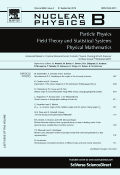
NUCLEAR PHYSICS B
Shaping the Landscape of Nuclear Science for Nearly 60 YearsNUCLEAR PHYSICS B, published by Elsevier, stands at the forefront of research in the dynamic field of Nuclear and High Energy Physics. Established in 1967, this prestigious journal has developed a reputation for excellence, now positioned in the Q1 category according to its 2023 quartile rankings. With an impressive Scopus rank of #21 out of 87 in its category and a commendable 76th percentile, it serves as a vital resource for scholars investigating the underlying principles of nuclear interactions and particle physics. The journal transitioned to an Open Access model in 2014, ensuring that groundbreaking research is accessible to a global audience. Its commitment to quality and innovation makes NUCLEAR PHYSICS B an essential platform for researchers, professionals, and students aiming to stay at the cutting edge of discoveries in this expansive field, contributing to the scientific discourse for nearly six decades.

PHYSICS OF ATOMIC NUCLEI
Unraveling the Mysteries of Matter's Building BlocksPHYSICS OF ATOMIC NUCLEI is a distinguished journal dedicated to advancing the understanding of nuclear and particle physics, published by PLEIADES PUBLISHING INC. With its ISSN 1063-7788 and E-ISSN 1562-692X, this journal serves as a vital resource for researchers, professionals, and students in the fields of atomic and molecular physics, as well as high-energy physics. The journal has been actively contributing to the scientific community since its inception in 1996 and continues to publish valuable findings through 2024. Despite its current standing in the Q4 category for both Atomic and Molecular Physics, and Nuclear and High Energy Physics, there is an abundance of potential for growth and impact in these disciplines, as evidenced by its placement in the Scopus rankings. While the journal does not currently offer open access, it remains committed to disseminating quality research that informs and engages the scientific community. Explore PHYSICS OF ATOMIC NUCLEI to stay at the forefront of nuclear physics research and contribute to the dialogue in this critical area of study.
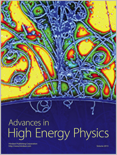
Advances in High Energy Physics
Illuminating the Path of High Energy Physics InnovationAdvances in High Energy Physics, published by HINDAWI LTD, is a premier open-access journal dedicated to the progressive field of Nuclear and High Energy Physics. With an ISSN of 1687-7357 and an E-ISSN of 1687-7365, this journal has been at the forefront of scientific discourse in high energy physics since its inception in 2007. The journal is notable for its impact within the community, currently holding a Q2 ranking in 2023 and positioned at #36 out of 87 in its category according to Scopus, highlighting its significant contribution to ongoing research and advancement in the field. Its accessible nature enables researchers, professionals, and students to engage with cutting-edge findings that shape our understanding of the universe. Spanning publications from 2010 through 2024, Advances in High Energy Physics serves as an invaluable resource for those looking to stay informed about the latest developments and methodologies in high energy physics across the globe.
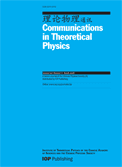
COMMUNICATIONS IN THEORETICAL PHYSICS
Fostering dialogue in the realm of theoretical physics.COMMUNICATIONS IN THEORETICAL PHYSICS is a distinguished journal published by IOP Publishing Ltd, focusing on the broad and evolving field of theoretical physics. With an ISSN of 0253-6102 and an E-ISSN of 1572-9494, this journal provides a platform for the dissemination of innovative research that contributes to the understanding of complex physical concepts. Situated in the United Kingdom, it has established itself as a pivotal resource from 1996 to 2024, achieving a commendable Q2 ranking in the category of Physics and Astronomy (miscellaneous) for 2023. With a Scopus ranking of #18 out of 81 in its category, demonstrating a 78th percentile, this journal plays a crucial role in enhancing scholarly communication among researchers, professionals, and students alike. Although it does not currently offer Open Access options, the journal's comprehensive scope and commitment to high-quality peer-reviewed research underline its significance in the scientific community, making it an essential reading for anyone engaged in theoretical physics.

ACTA PHYSICA POLONICA B
Pioneering Insights in Physics and AstronomyACTA PHYSICA POLONICA B is a distinguished journal published by Jagiellonian University Press, based in Poland. This peer-reviewed publication focuses on advancing the field of Physics and Astronomy with a mission to disseminate high-quality research that spans various subfields and interdisciplinary connections. Since its inception in 1980, the journal has steadily become a reliable source of scientific discourse, continuing its commitment through 2024. With a Q3 rank in the Physics and Astronomy category, it stands as an important resource for both established and budding researchers, contributing to a deeper understanding of complex physical phenomena. The journal is indexed by Scopus, ensuring a broad reach within the academic community, although it is not classified as an open-access resource. By promoting rigorous scientific inquiry and fostering connections within the global academic landscape, ACTA PHYSICA POLONICA B plays a vital role in shaping the future of physics research.

ATOMIC DATA AND NUCLEAR DATA TABLES
Empowering research with essential data and insights.ATOMIC DATA AND NUCLEAR DATA TABLES, published by Academic Press Inc Elsevier Science, is a leading journal in the fields of atomic and molecular physics, as well as nuclear and high energy physics. With an ISSN of 0092-640X and an E-ISSN of 1090-2090, this esteemed journal has been providing comprehensive data tables and significant research insights since its establishment in 1969. Spanning until 2024, it continues to serve as an invaluable resource for researchers and professionals aiming to deepen their understanding of atomic interactions and nuclear processes. Holding a commendable Q2 ranking in both relevant categories, it is recognized for its impact, reflected in Scopus rankings, where it ranks 25th out of 87 in Nuclear and High Energy Physics, and 87th out of 224 in Atomic and Molecular Physics. While it does not offer open access, the journal remains a crucial repository for high-quality data essential for scientific endeavors and advancements in these complex fields.

PHYSICS OF PARTICLES AND NUCLEI
Charting New Territories in Particle PhysicsPhysics of Particles and Nuclei is an esteemed journal within the field of nuclear and high energy physics, published by Pleiades Publishing Inc. Based in the United States, this journal has been a vital platform for disseminating cutting-edge research since its inception in 1996, with coverage extending until 2024. Indexed under the ISSN 1063-7796 and the E-ISSN 1531-8559, it has established itself as a noteworthy publication, currently categorized in the Q3 quartile according to the 2023 standards for Nuclear and High Energy Physics. With its Scopus ranking placing it at #62 out of 87 in its category, Physics of Particles and Nuclei provides unique insights and discussions that resonate with academics, researchers, and students alike. Although it does not offer open access, the journal continues to serve as a crucial resource for those looking to engage deeply with the latest advancements and theoretical explorations in particle and nuclear physics.
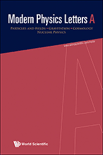
MODERN PHYSICS LETTERS A
Connecting Innovators in Astronomy and High Energy PhysicsMODERN PHYSICS LETTERS A, published by World Scientific Publishing Co Pte Ltd, is a distinguished journal in the field of physics that serves as a pivotal platform for researchers, professionals, and students alike. With ISSN 0217-7323 and E-ISSN 1793-6632, the journal has gained international acclaim for its contributions to Astronomy and Astrophysics as well as Nuclear and High Energy Physics. The journal is ranked in Q3 for both Astronomy and Astrophysics and Nuclear and High Energy Physics, showcasing its relevance in these areas, while also achieving a Q2 ranking in the broader category of Physics and Astronomy (miscellaneous). Spanning from 1996 to 2024, MODERN PHYSICS LETTERS A promotes open dialogue and dissemination of pioneering research findings and innovative theories. While the journal operates without an open access option, its rich content is easily accessible through various academic databases, ensuring that vital research is shared widely among the scientific community. Situated in Singapore, this journal plays an essential role in the continuous advancement of the physics discipline, fostering collaboration and knowledge sharing among global researchers.